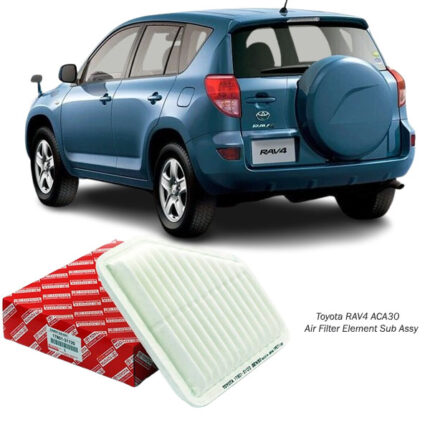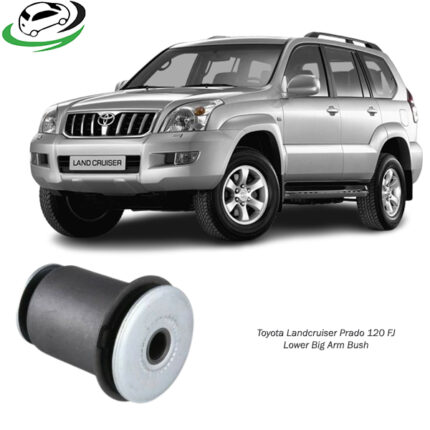-14%
Front Brake Pads Nissan Murano Z50 in Kenya.
Find the best prices for Front Brake Pad for Nissan Murano Z50 in Nairobi Kenya.
The price for Front Brake pad for Nissan Murano Z50 is Ksh3500 per set in Nairobi Kenya.
The Crucial Role of Brake Pads in Vehicle Safety and Performance
Brake pads, a seemingly modest component within a car’s braking system, play a pivotal role in ensuring the safety and performance of the vehicle. As a key element in the friction-based braking system, brake pads undergo intense forces and heat during every stop, converting kinetic energy into thermal energy and providing the necessary stopping power. In this comprehensive exploration, we delve into the intricacies of brake pads, their composition, functions, maintenance, and the impact they have on overall vehicle safety and performance.
**1. Composition and Construction: Brake pads are typically composed of a combination of materials chosen for their ability to withstand high temperatures, provide consistent friction, and endure the forces of repeated braking. The most common materials used in brake pads include:
- Organic: Made from a mixture of materials like rubber, carbon compounds, and glass, organic brake pads offer smooth and quiet operation. They are suitable for everyday driving but may wear faster under heavy braking conditions.
- Semi-Metallic: These brake pads contain a blend of metals such as copper, iron, and steel, combined with friction modifiers. Semi-metallic pads provide excellent heat dissipation and are durable, making them well-suited for high-performance and heavy-duty applications.
- Ceramic: Composed of ceramic fibers, non-ferrous filler materials, and bonding agents, ceramic brake pads are known for their low noise, dust-free operation, and efficient heat dissipation. They are often used in high-end and luxury vehicles.
- Low-Metallic NAO (Non-Asbestos Organic): Incorporating organic materials along with a small amount of metal fibers for enhanced heat dissipation, low-metallic NAO brake pads offer improved stopping power over fully organic pads and are suitable for various driving conditions.
**2. Functionality in the Braking System: When a driver applies the brakes, hydraulic pressure is exerted on the brake fluid, which in turn presses the brake pads against the rotating brake discs (or rotors) attached to each wheel. The resulting friction between the brake pads and discs generates heat and slows down the rotation of the wheels, bringing the vehicle to a stop. This process is repeated each time the brakes are engaged, making brake pads a critical component for safe and effective braking.
**3. Wear and Tear: Due to the immense forces and heat generated during braking, brake pads undergo wear and tear over time. The rate of wear depends on various factors, including driving habits, vehicle weight, and the type of brake pads installed. Manufacturers often provide recommended replacement intervals, but it’s essential for drivers to monitor signs of brake pad wear, such as squeaking sounds, reduced braking performance, or visible wear indicators.
**4. Signs of Brake Pad Wear: Recognizing the signs of worn brake pads is crucial for maintaining vehicle safety. Common indicators include:
- Squeaking or Squealing Noises: High-pitched noises during braking may indicate that the brake pads have worn down to the point where wear indicators, designed to emit sounds, make contact with the brake discs.
- Reduced Braking Performance: If the vehicle takes longer to come to a stop or if the brake pedal feels softer than usual, it may signal diminished brake pad effectiveness.
- Visible Wear Indicator: Some brake pads come equipped with a small metal tab that becomes exposed as the pads wear down. If this indicator is visible, it’s a clear sign that replacement is necessary.
- Uneven Wear: Uneven wear on the brake pads can be indicative of issues with the braking system or improper installation.
**5. Maintenance and Replacement: Regular maintenance of the braking system, including inspection of brake pads, is essential for ensuring optimal performance and safety. When replacing brake pads, it’s advisable to replace them in pairs on the same axle to maintain balanced braking. Additionally, proper bedding-in or “burnishing” procedures recommended by the brake pad manufacturer should be followed to optimize the pad-disc interface for consistent friction.
**6. High-Performance and Specialty Brake Pads: For enthusiasts and those seeking enhanced braking performance, various high-performance and specialty brake pads are available. These pads may feature advanced materials, improved heat resistance, and enhanced stopping power. It’s crucial to select brake pads that align with the specific driving conditions and performance requirements.
**7. Environmental Impact: Certain brake pad materials, such as those with high metallic content, may generate brake dust, contributing to particulate pollution. The use of low-dust or ceramic brake pads can help minimize the environmental impact and maintain cleaner wheels.
**8. Technological Advancements: Advancements in brake pad technology continue to evolve, with ongoing research focused on improving performance, reducing wear, and enhancing overall braking efficiency. Intelligent braking systems, such as regenerative braking in electric vehicles, represent examples of innovative approaches to braking technology.
**9. DIY Brake Pad Replacement vs. Professional Service: While some experienced vehicle owners may opt for DIY brake pad replacement, it’s crucial to recognize that proper installation is essential for safety. For those less familiar with automotive maintenance, seeking professional service ensures that brake pads are installed correctly, reducing the risk of braking system issues.
**10. Choosing the Right Brake Pads: Selecting the appropriate brake pads for a vehicle involves considering driving habits, vehicle type, and desired performance characteristics. Consulting the vehicle manufacturer’s recommendations and seeking advice from automotive professionals can guide the selection process.
Conclusion: In conclusion, brake pads are fundamental components in a car’s braking system, playing a vital role





